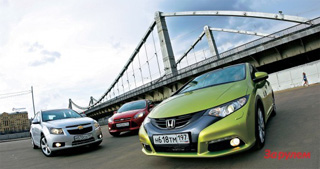Test Drive Honda Civic Sedan since 2012 Sedan
Shadow samurai.
Honda is famous for reliability, but they scare up difficulty: how to know if the used overseas equipment does not break the owner? After all, even the modest five-seven year old Sivics are styled with original nodes: it is a multi-dimensional independent suspension of all wheels with passive girling of the rear, and the electronically hydraulic valve control system (VTEC), and automatic transmissions of its own design, and even a chain variator! And in generation 1992-1996. There was a all-wheel drive version. How to progress when buying and competently exploit these cars, we told us specialists of the dealer technical center of FC Motors.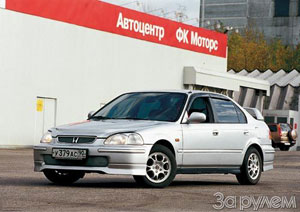 PEDIGREE
PEDIGREE Plants where Siviki fifth and sixth generations were collected, scattered around the world. Officially, cars only have been supplied to the Japanese assembly in European configuration, and until 1996, only with a D15B3 carburetor engine or a monofryed D15B2, without a neutralizer and lambda probe. However, thanks to the gray dealers in the Russian market, almost the entire lineup is presented.
Although the special Eastern package for Sivikov does not exist, with a stranger car we can have problems. If the car was intended for a roast and dry climate, the oil filter sealing ring in Russia may be so planted, which will lose hermetically. And the hot oil under pressure leaks quickly! Therefore, there are special attention to rubber bands on such machines, and the filter is better to immediately replace from sin. Another problem is anticorros. Why is he in the edge of sand storms? US and Canadian versions are suitable for us, but they have original body details - they are not easy to find a replacement. The same with universals - popular in Europe, for some reason they did not fit in Russia. Even less than all-wheel drive cars, although there were no complaints about them. But five-door hatchbacks from England (they were released only there) - quite a few, although we did not officially sell them.
Two enemy
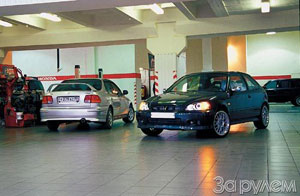 The durability of Hondovsky engines makes legends. Therefore, sellers often do not hide two-thousandth runs - with good care even forced motors (for example, B16A2 produces 100 liters. With liters) often serve more than 300 thousand km. Chronic diseases like injection and carburetor engines are absent. They have only two serious enemy - bad oil and overheating.
The durability of Hondovsky engines makes legends. Therefore, sellers often do not hide two-thousandth runs - with good care even forced motors (for example, B16A2 produces 100 liters. With liters) often serve more than 300 thousand km. Chronic diseases like injection and carburetor engines are absent. They have only two serious enemy - bad oil and overheating. Honda engines are collected by selective technology: the details in the pair are selected individually. Hence the minimum gaps in the pairing and high resource. When using mineral oils, parts are covered by low-temperature sediments, which can lead to oil starvation and even the encoding. The hole is the plug of oil-coaling neck and take a finger along the inner surface of the timing cover. Waky's impregnated worshi will tell you: the engine lived in disadvantage. Remove part of the dirt will help washing, but after it, the oil will have to change twice - after all, after a drain, about 1 liter of oil remains in the system, and high-speed Hondov engines are very demanding of its quality.
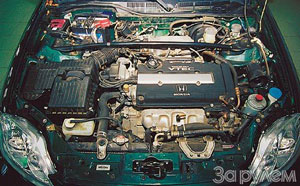 To avoid blockages and do not suffer with flushing, use synthetics or semi-synthetic, good when calm oil consumption is almost impaired even with large runs. (However, if you regularly drive the tachometer's arrow into the red zone, you will have to get a dipstice more often - miracles do not wait!) We change the oil at least once a year or every 10 thousand km.
To avoid blockages and do not suffer with flushing, use synthetics or semi-synthetic, good when calm oil consumption is almost impaired even with large runs. (However, if you regularly drive the tachometer's arrow into the red zone, you will have to get a dipstice more often - miracles do not wait!) We change the oil at least once a year or every 10 thousand km. It is difficult to overload a good engine. Often, the cooling system is a victim of negligence (thrombus from the frozen sealant, the left liquid, which is not replaced by the thermostat in time, the hose, etc.). When buying, pay attention to the top hose coming from the radiator. If he break, probably the previous owner traveled with a faulty thermostat. I will open the radiator cork (only on the cooled motor!) - Socks should not be on it. Muddy or rusty coolant is also an alarming symptom. Then it is necessary to look under the engine: if the crankshaft pulley (near the drainage hole of the pump) is visible drops of a liquid or a white flare, a pump replacement is visible. This is at least a reason for bargaining. Protect the same radiator from dirt will help the mosquito mesh in the air intake or pantyhose tights stretched to the frame.
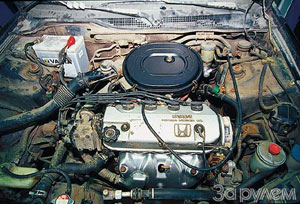 If you feed the motor correct liquids and do not save on the filters, it will require a little attention. Every 40 thousand km - checks the gaps in the timing, every 100 thousand km - the replacement of the belt. Candles are not long resistant to domestic gasoline, but the electric junction and nozzles are digested. However, since the car traveled in Russia, it is worth removing the fuel pump and inspect the tank from the inside: if at the bottom of the muddy alien, it is better to remove it and wash it out - save on the tow truck. But the well-proofs are usually quite efficient. It is not necessary to rinse them prophylantically, but when the engine is diagnosed, it is worth paying attention to the time of injection. However, its increases against the norm does not necessarily indicate a malfunction of nozzles - the reason may also be in the suction sediment.
If you feed the motor correct liquids and do not save on the filters, it will require a little attention. Every 40 thousand km - checks the gaps in the timing, every 100 thousand km - the replacement of the belt. Candles are not long resistant to domestic gasoline, but the electric junction and nozzles are digested. However, since the car traveled in Russia, it is worth removing the fuel pump and inspect the tank from the inside: if at the bottom of the muddy alien, it is better to remove it and wash it out - save on the tow truck. But the well-proofs are usually quite efficient. It is not necessary to rinse them prophylantically, but when the engine is diagnosed, it is worth paying attention to the time of injection. However, its increases against the norm does not necessarily indicate a malfunction of nozzles - the reason may also be in the suction sediment. In terms of reliability, carburetor motors are not inferior to injection, only numerous hoses, axes and diaphragms require care. Just once a year to treat hoses with silicone preparations that restore elasticity, and metal moving connections - light-perky lubricants with an anti-corrosion action. In no case are not attempting to adjust the complex system by the presentation method: restore the starting position of the trim screws - a puzzle even for professionals.
If a rocometer from the ignition distributor appears, check the tension of the timing belt - due to corner oscillations camshaft, the backlash in the slots turns into a knock. If the rockness did not disappear, it is possible that the rotor bearing is worn.
Mechanics, automatic or variator?
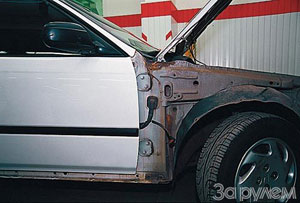 Sivique can boast enviable variety of gearboxes. The mechanic is traditionally popular - about 95% of the fifth generation machines and 80% are equipped in Russia. There are no complaints, although boxes 1992-1996. We are content with conventional engine oil 10W-40. Since 1996, Honda recommends special oil for MTF manual transmission (Manual Transmission Fluid), uses its use in old boxes. The clutch with the hydraulic drive of weaknesses is not - it serves more than 150, and sometimes 250 thousand km.
Sivique can boast enviable variety of gearboxes. The mechanic is traditionally popular - about 95% of the fifth generation machines and 80% are equipped in Russia. There are no complaints, although boxes 1992-1996. We are content with conventional engine oil 10W-40. Since 1996, Honda recommends special oil for MTF manual transmission (Manual Transmission Fluid), uses its use in old boxes. The clutch with the hydraulic drive of weaknesses is not - it serves more than 150, and sometimes 250 thousand km. Original Hondovsky automatic transmissions are famous for reliability and imaginableness. Unlike traditional planetary machines, they are built according to the scheme of ordinary boxes, so relatively cheap in repairs - a maximum of 700-800 dollars. But to find a replacement on the disassembly is almost unreal: for Sivikov, four types of automata with different gear ratios were produced. To make the box did not fail, change the oil (ATF Premium, Dexron II or III) more often, at least once every 30 thousand km, because without disassembling the unit it is possible to drain less than half.
CVT variator gearbox - Honda raisin. It allows not only to play 1.7 ° C by the automaton at a distance of 400 m, but also 0.1 C from mechanics. In addition, fuel economies (SMS, 1999, No. 2, p. 26). Mix the car with CVT is the easiest way to select the gear selector: a row for AKP - P-R-N-D-D3-D2-D1, and for CVT - P-R-N-D-S-L. The reliability of the variator on Sivik is out of suspicion - on the corporate oil atf z1 it will take place not one hundred thousand. Multiple steel pushing (!) Belt works well even on heavier HR-V (see SM, 2003, No. 12). Unless the trophy raids on the Russian off-road and the race from the traffic light to the traffic lights are able to withdraw the variator.
Realcate around the bone
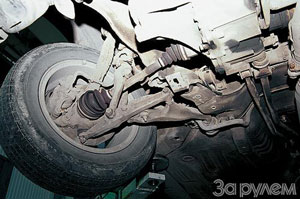 Shrusi - inner three, outdoor balls - almost eternal, subject to the purpose of their covers. As a rule, external anthers are formed first (after 5-7 years of operation). We replace them without waiting for cracks on the bends turn into holes.
Shrusi - inner three, outdoor balls - almost eternal, subject to the purpose of their covers. As a rule, external anthers are formed first (after 5-7 years of operation). We replace them without waiting for cracks on the bends turn into holes. The bearings of the hubs on the fifth generation machines almost did not cause problems, but in the sixth front may be asked to replace 80-160 thousand km, the rear - to 120-200 thousand. The external tuning today is brings up early repair. Widely spaced wheels not only sandblasting the arches and doors, but also kill bearings. If the wheel departure is 35 mm and less (there is about 50 mm in standard), immediately buy a set of bearings about the reserve. Yes, and the replacement operation is not cheap - you have to remove the swivel fist.
Both the front and rear suspension of Siviks very rarely require attention. The upper ball support serves more than 150 thousand km (varies assembled with the lever), lower - more than 200 thousand. Silent blocks will survive a car, only after 6-10 years of operation, may have to replace the rack of the transverse stability stabilizer.
Silent blocks of longitudinal levers of the rear suspension can be called a weak link only conditionally - they give up first, but before more than 150 thousand km serve. Fortunately, even their accident rupture does not threaten, but the famous Honda manageability is no longer wait, and the knocks will be monitored.
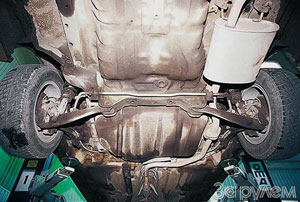 After replacing parts, do not forget to adjust the angles of the installation of the wheels - and the front, and the rear. By the way, only the convergence is adjusted in front, so when buying special attention - the body: the slaughter of rest of the restraint will not give.
After replacing parts, do not forget to adjust the angles of the installation of the wheels - and the front, and the rear. By the way, only the convergence is adjusted in front, so when buying special attention - the body: the slaughter of rest of the restraint will not give. There is no complaints about steering. The tips of the crash serve more than 120 thousand km. The rake does not flow, only with solid runs (150 thousand km) sometimes it is necessary to adjust the gap in the engagement (not more difficult than on Samara, the main thing is not to drag!). In the hydraulicel, you can not pour atf - how many expensive aggregates of the proof by ignorance! The replacement of a special Honda fluid is not provided, but with suspicious smell and color it is better to progress. Change it with a consistent substitution (1.5-2 liters will be required), without disassembled the system (SP, 2003, No. 4, p. 246).
Brakes - chain and reliable. With entire anthers, the guides are not thrown over the years, and leak fluids through cuffs when blending pistons (Lucas brake mechanisms) - not a reason for concern. The culprits of poor braking rear wheels can be two: the valve of the distribution of effort on the engine shield and the blurred gap between the stem brake cylinder and the vacuum amplifier. The first is replaced, the second is regulated using a special device. When ordering pads, be sure to specify VIN - the brake mechanisms are different.
AT THE BOTTOM
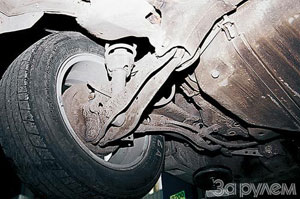 Eighty percent of body panels are galvanized (except roof, rear racks, rigidity amplifiers). Rust on five-seven-year-old machines - as a rule, a sign of body repair. Exception - rear arches. If at least once a year, in the spring, do not rinse their cavities from the salts and dirt there, after a few years, spiders and points come to enamel. The situation is aggravated if there is a rubber band, protecting the joint of the arch and wing.
Eighty percent of body panels are galvanized (except roof, rear racks, rigidity amplifiers). Rust on five-seven-year-old machines - as a rule, a sign of body repair. Exception - rear arches. If at least once a year, in the spring, do not rinse their cavities from the salts and dirt there, after a few years, spiders and points come to enamel. The situation is aggravated if there is a rubber band, protecting the joint of the arch and wing. There are almost no protruding details from below: the silencer is stubborn in the tunnel, the pipelines are closed with protective covers, even under the bolts of fastening of protection in the spars are submarine. The thresholds are protected from stones and borders with plastic lining. That's just the front mudguards in Russia do not live for a long time - nevertheless landing at Sivikov is low.
The electrician is almost reliable. Compounds - with a triple seal on the connector and for each wire, the harnesses are protected by plastic shells. After several years of operation, the front electric windows begin to eat: the glass is thrown on the rise, it comes out of the groove. The reason is in the accumulated dirt: it is enough to clean and smear the guides with silicone spray, although sometimes you have to adjust the mechanism.
On strangers
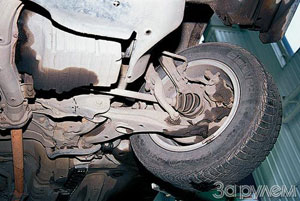 With all the difficulty of Honda, it is quite friendly to the mechanics: the special tool is almost no required, all sorts of torks-star too (aggregate repair is not counted), so many hand car enthusiasts are serviced by these cars for years. But, it happens, and burn ...
With all the difficulty of Honda, it is quite friendly to the mechanics: the special tool is almost no required, all sorts of torks-star too (aggregate repair is not counted), so many hand car enthusiasts are serviced by these cars for years. But, it happens, and burn ... When replacing the two-row bearing of the front hub, the inner ring often remains on the hub. Attempts to knock him down with a hammer will almost certainly leave the fears on the seating surfaces - then the new bearing will last long, sometimes no more than 10-15 thousand km. In the company's service for this operation there is a puller, the fears will have to be slapped. Shruises from the gearbox are removed easily, but when they are installed, the gland is often damaged. You can't buy it around the corner - therefore it is better to entrust the operation of professionals. Many craftsmen, instead of replacing the gaskets, enhance their sealant. The motor is threatened with a catastrophe: the sealant flooded under pressure clogs lubricating channels - refuses the VTEC system, and to the wedge not far. In the roadside service they do it all and nearby - where does Hondov's gaskets come from? Alas, in Russia, the Beach of these machines are not the road and not even gasoline, but the brave masters of scrap and sledgehammes.
D15B3 carburetor engine - official
until 1996 in Russia.
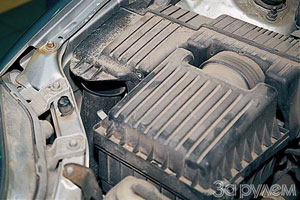 The two-walled engine is 1.6 liters (160 liters.) Provides a spacer in the standard configuration.
The two-walled engine is 1.6 liters (160 liters.) Provides a spacer in the standard configuration. The place of birth of the car is encrypted in the first three symbols VIN: JHM - Japan, 1HG - USA, 2HG - Canada, Shh - United Kingdom.
Air fence - from above, from under the hood. Motor does not bother water from puddles.
The cooling system radiator and conditioner condenser do not overlap the air.
Information about color, configuration, tire size and pressure in them - in stickers on the left central rack.
In the suspension until 1996 there were forged levers ...
... After 1996, all - only stamped. Reliability remained at the height.
The rear stabilizer of transverse stability was installed only on the most powerful versions. And with engines
1.4 liters did not put the front.
Rear multi-dimensional suspension. The arrow shows the Silent-block of the longitudinal lever - it is surrendered before others.
Ice bulks left marked on spars - but even the protection of the highways remained untouched.
1996 car. Under the wing and overlay, the metal threshold will not even touch corrosion.
History of the model
1991 year. The fifth generation of Honda Sivique is presented on the Frankfurt Motor Show. Body - sedan, three-door hatchback, coupe, control (shuttle). Engines - row, 4-cylinder, 16-valve, are located in front: carburetor 1.2, 1.3 and 1.5 liters (including D15V4 - with two carburetors) with 50 to 71 kW / from 68 to 96 l. s., with a monofree 1.5 l, 66 kW / 90 liters. with. and with a distributed injection of 1.5 and 1.6 l with a capacity from 75 to 118 kW / from 102 to 160 liters. with. Transmission - manual or automatic. There is a all-wheel drive version with an ussociate in the rear bridge.
1994. Five-door hatchback. Engine 1.4 liters with distributed injection 66 kW / 90 liters. with.
1995. A new generation with a partial update of the engine gamut: the release of motors with monofry and carburetor will stop. The engine of 1.4 l, 55 kW / 75 liters appeared. with. Changed the body design, suspension. CVT variator transmission appeared.
1997. A new five-door hatchback is presented at the Geneva Motor Show. Expanded gamma engines due to injection 1.8 l, 124 kW / 169 liters. with. and diesel engine with direct injection (ROVER) 2.0 l, 63 kW / 86 liters. with.
1998. Universal (Aerodeck). Moldings on the bumper and doors are painted in body color.
year 2000. The debut at the Paris Salon of the current, seventh generation of Cyvikov.
Anatoly Sukhov. Photo: George Sadkov
A source: Journal "Behind the wheel"











